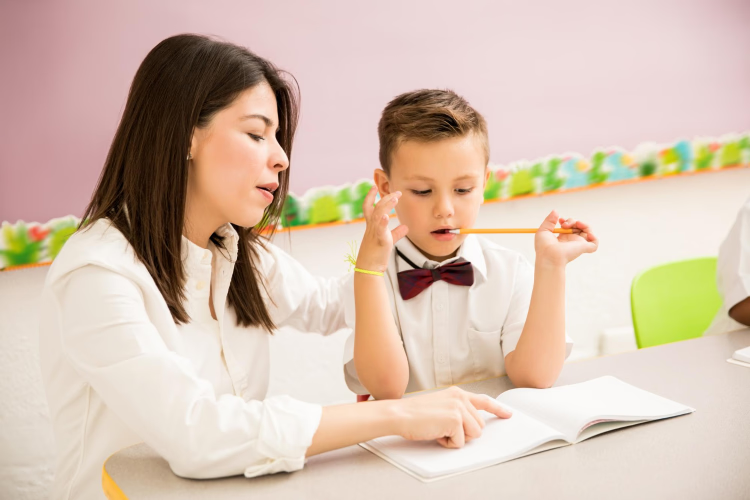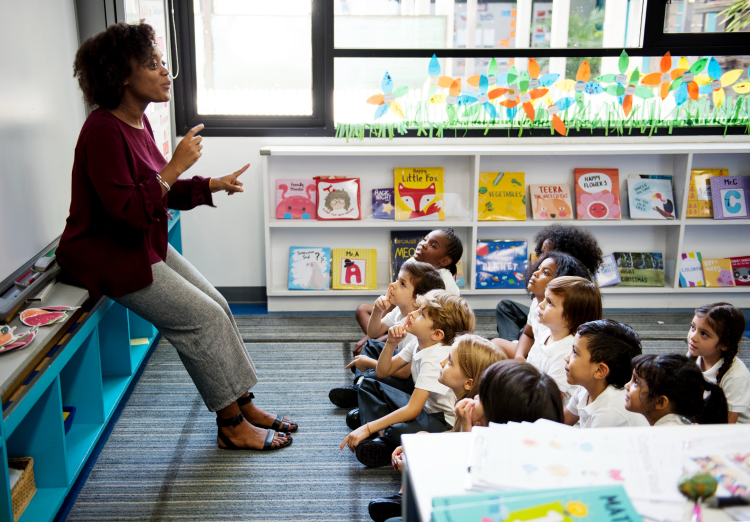Imagine this: You’re preparing to teach in an international classroom. A class full of students from different cultures, each bringing their unique perspectives. It’s exciting, isn’t it? But then, a thought crosses your mind:
How will I connect with students from such diverse backgrounds?
What if my words don’t resonate with them?
How can I ensure every student feels seen, heard, and understood?
Here’s the thing—teaching isn’t just about delivering lessons. It’s about connecting. And the way you communicate is the key to building that connection.
Verbal communication is what you say. It’s how you explain ideas, guide discussions, and simplify complex topics so everyone understands.
But it’s not just about words. Non-verbal communication is equally important. It’s how you smile to reassure a nervous student, your gestures to make a point, or the eye contact that shows you’re listening.
The difference between verbal and non-verbal communication is simple—your words carry the message, but your actions make it meaningful. Together, they’re the tools that help you break barriers, foster trust, and create a classroom where every student feels included.
And let’s be honest—the importance of verbal and non-verbal communication in an international classroom goes beyond just teaching lessons. It’s about building a connection that helps every student thrive.
In this blog, I’ll share 10 simple techniques to make your communication more effective, your lessons more engaging, and your classroom a place where every student feels valued. Let’s get started
While teaching "greater than" and "less than," I formed a small gap with my hands for "less than" and a wide gap for "greater than." Instantly, students understood.
This is one of the great verbal and non-verbal communication examples. Gestures paired with clear speech help students visualize concepts. For instance, mimic a triangle’s shape with your hands when teaching geometry or show flowing motions for water currents.
This highlights the importance of verbal and non-verbal communication, especially in international classrooms, where combining words with gestures ensures clarity for all students.
I remember explaining the water cycle: “Water evaporates, forms clouds, and rains back.” My students looked puzzled. Then, I added a simple diagram, pointing to each stage while explaining. Their faces lit up with understanding.
This is how verbal and nonverbal communication work together. Visual aids like diagrams and charts make abstract ideas more accessible.
Visuals clarify verbal and non-verbal communication for kids. For instance, use a labeled food chain diagram to connect your words with something they can see when describing energy flow.
During a class discussion, a shy student hesitated to answer. I smiled, nodded, and said, “Take your time, I’m here to listen.” After receiving little encouragement, they shared their thoughts, and others followed.
This shows the difference between verbal and non-verbal communication. Verbal cues like “That’s a great idea,” combined with non-verbal signals like nodding or smiling, show students you value their input.
These small actions boost confidence and encourage participation in verbal and non-verbal communication for kids. When students feel heard, they engage more actively and trust the classroom environment.
During a noisy group activity, I raised my hand for silence and said, “Let’s focus.” Within seconds, the chatter stopped, and everyone paid attention.
This is one of the simplest verbal and non-verbal communication examples. A clear hand signal grabs attention non-verbally, while verbal reinforcement ensures students understand your expectations.
Combining both techniques creates clarity and structure in the classroom, especially with younger learners who respond well to visual and spoken cues.
I once narrated a story about a clever fox sneaking through a forest. I whispered dramatically and widened my eyes in suspense. When the fox found treasure, I smiled brightly and raised my voice. The students were glued to every word.
This highlights the difference between verbal and non-verbal communication. Verbal storytelling creates the narrative, while non-verbal expressions like tone, gestures, and facial cues bring the story to life and make it more memorable.
During a lesson, I noticed some students looking hesitant. I leaned forward, smiled warmly, and said, “Feel free to ask anything!” Within moments, hands began to rise.
This is where verbal communication and non-verbal communication work together. Welcoming phrases like “What do you think?” paired with open gestures and a relaxed posture encourage students to share their thoughts without fear.
During a group discussion, a student hesitated to speak. I leaned in slightly, maintained eye contact, smiled warmly, and said, “We’d love to hear your thoughts!” I followed up with, “Take your time—we’re here to listen,” and then added, “Your ideas always add value to our discussions.” These verbal cues, combined with a gentle nod and an encouraging gesture, helped the student feel supported, and they confidently shared their ideas.
This shows how verbal and non-verbal communication for kids creates a supportive environment. Words encourage participation, while gestures like nodding or smiling signal acceptance and build trust.
I once explained a science experiment step by step. Despite my precise instructions, some students still looked puzzled. So, I demonstrated—pouring water and stirring—and suddenly, they understood.
This is one of the best verbal and non-verbal communication examples. Verbal instructions clarify the process, while modeling ensures students grasp each step visually, bridging the gap between explanation and execution.
I once explained a complex math concept using technical terms. My students’ confused faces said it all. I simplified the explanation into smaller steps, and their nods showed understanding.
This shows how verbal communication and non-verbal communication work together. Simple words clarify ideas, while observing students’ non-verbal cues, like nodding or puzzled looks, ensures they follow along.
During a history lesson, I noticed students zoning out. I slowed my speech, paused for emphasis, and used a firmer tone for crucial points. Their attention instantly returned.
This shows the importance of verbal and non-verbal communication in keeping students engaged. Adjusting your tone and pacing ensures students process complex ideas without feeling overwhelmed.
Teaching in an international classroom is more than just a career move—it’s an opportunity to grow professionally, embrace diversity, and create meaningful connections with students. However, thriving in these settings requires more than just meeting eligibility. The key is mastering the essential skills to engage students from diverse cultures and adapt to new educational environments.
While verbal and non-verbal communication is crucial, it’s just one of the many skills that help teachers succeed in global classrooms. Skills like cultural adaptability, student-centered teaching, classroom management, and effective lesson planning are equally vital. These skills allow you to create an inclusive environment where every student feels valued and understood, regardless of language or cultural differences.
Suraasa helps teachers like you become international-ready by offering programs like PgCTL, which focus on developing these essential skills. Suraasa ensures you’re prepared to excel in any classroom, from mastering communication techniques to adopting innovative teaching strategies.
If you dream of teaching in international schools, Suraasa can help you on your journey. Our team prepares teachers like you for every step, from upskilling to securing the right opportunities. Take the first step today by talking to a Teacher Career Expert at Suraasa. They’ll help you build your skills and plan your journey toward a fulfilling career in international classrooms.
Happy teaching!

















